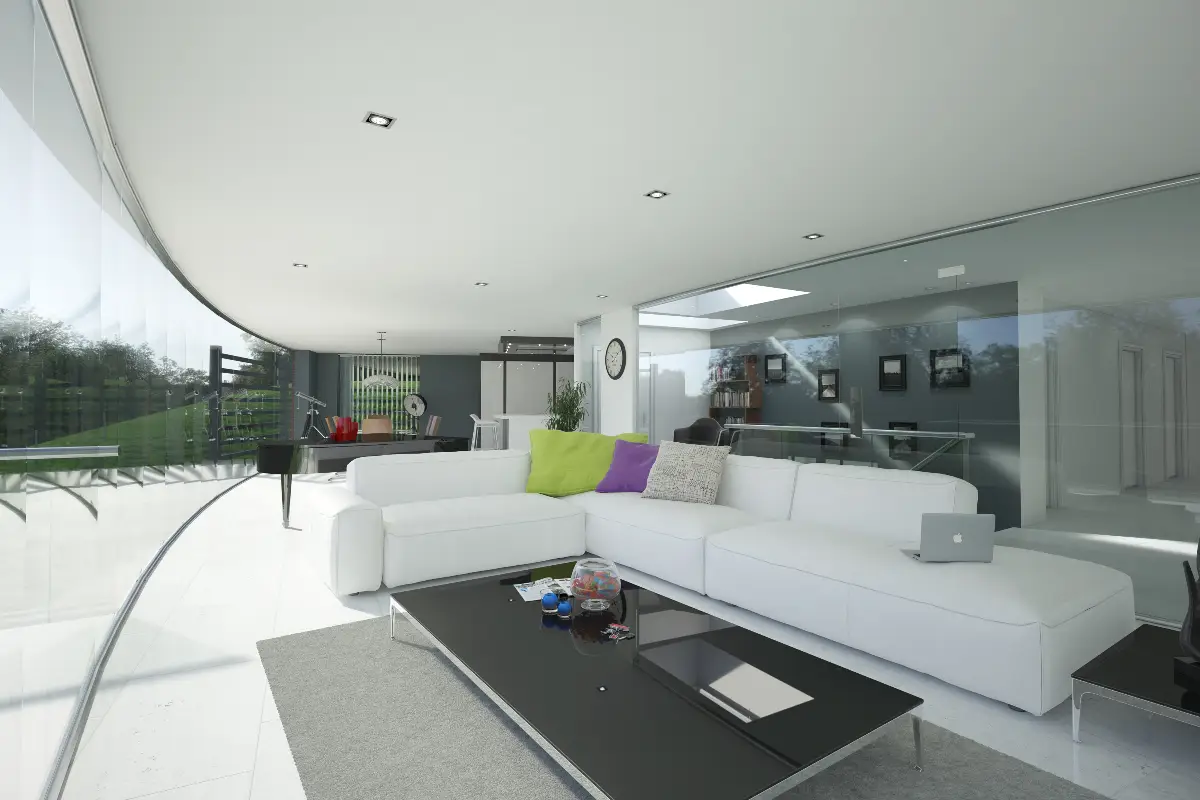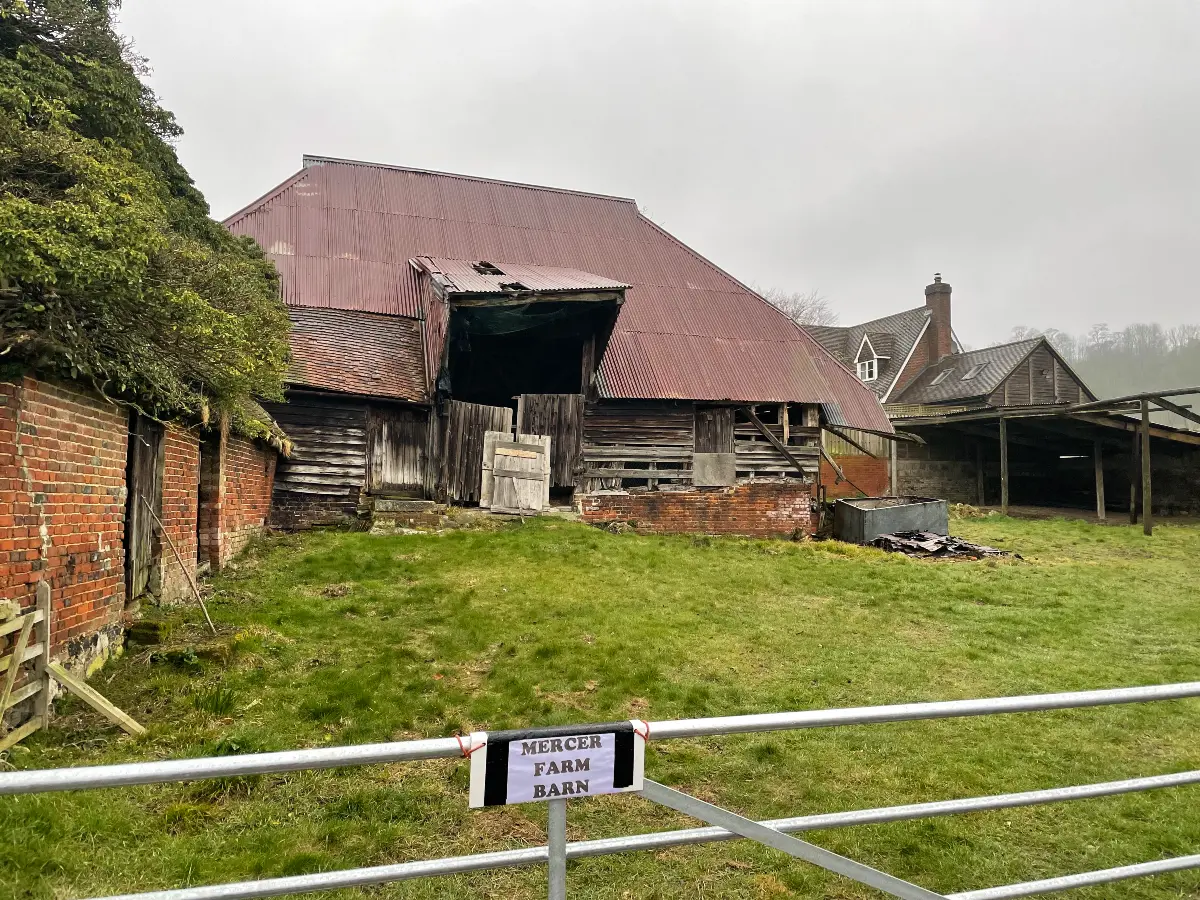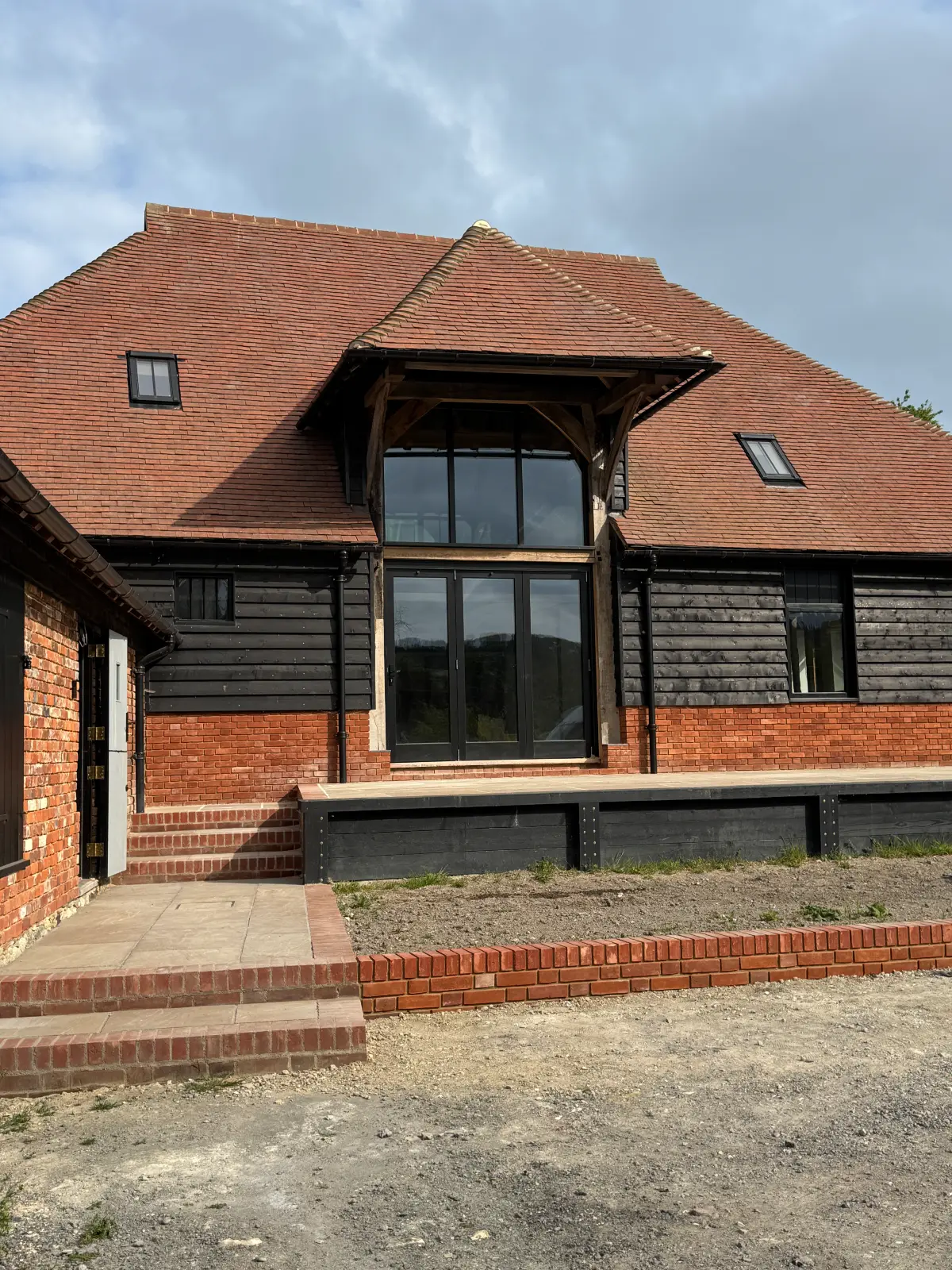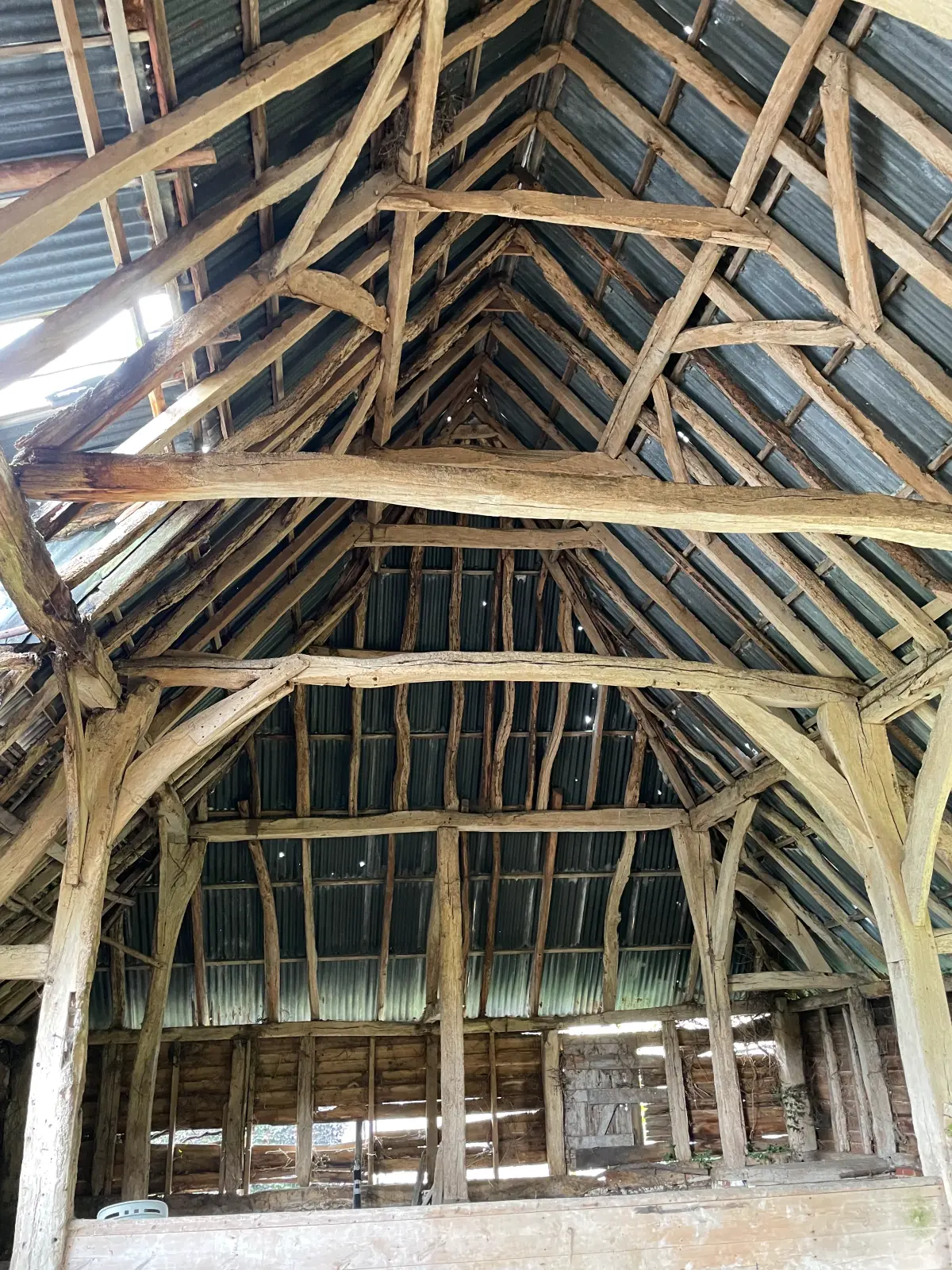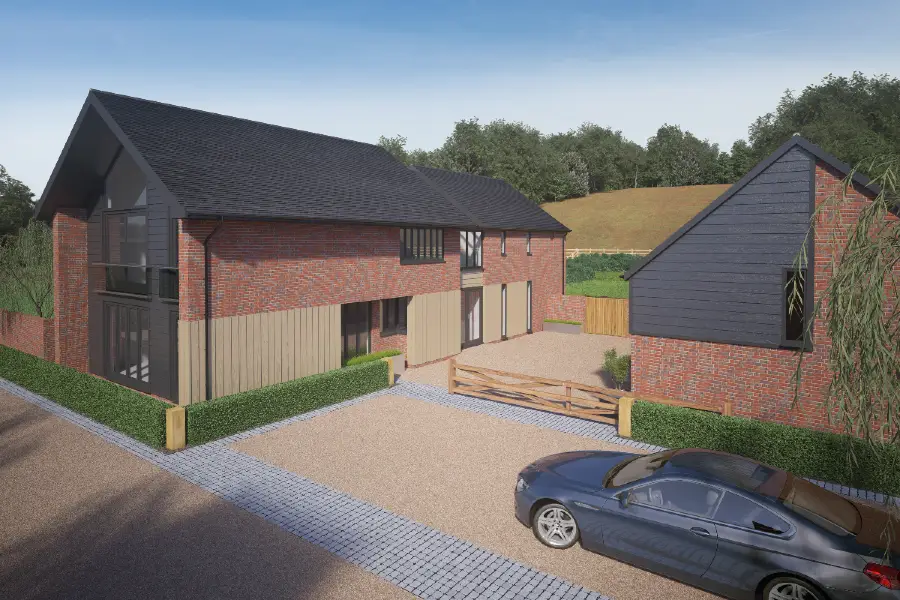Barn Conversion In Kent: Transforming A Listed Farm Into A Modern Home
Listed barn conversion into a modern family home
We worked with private clients and a team of specialist craftspeople to deliver a listed barn conversion in rural Stowting, transforming a derelict Grade II listed structure into a modern three-bedroom home.
The clients had purchased the property at auction with planning permission already in place. They asked us to help transform it into a characterful dwelling that preserved the exposed traditional oak frame while introducing clean, modern finishes.
To bring their vision to life, we developed the design, discharged the planning conditions, and oversaw the restoration process. The conversion retains the barn’s historic fabric while introducing crisp, contemporary features such as a glass-and-steel staircase and a gallery landing.
Completed in 2025, this unique modern barn conversion features an expansive open bay with a double-height dining area, three en suite bedrooms, and a rich material palette of timber, brick, and black-stained joinery.
Mercer Farm, A Listed Barn In The Kent Downs
Mercer Farm is located just off Stowting Hill in the village of Stowting, about seven miles northwest of Folkestone. The barn is part of a rural cluster of homes surrounded by open countryside and ancillary structures, including a red phone box that has become a quirky local landmark.
Once a working agricultural building, the Grade II listed barn had fallen into serious disrepair. Its original roof tiles were missing, a tree was growing through the adjoining stable block, and the base of the oak frame showed signs of structural settlement.
Even in disrepair, the barn’s prominent position and orientation, offering views across the Kent Downs, presented a clear opportunity for restoration.
Choosing Taylor Roberts To Design A Barn Conversion in Kent
The clients approached us following a personal recommendation from a relative, a local building contractor we’d worked with on a planning application in the nearby village of Petham
Impressed by our experience with heritage projects, they asked us to take on the detailed design and oversee the restoration of Mercer Farm.
The Brief
The clients’ brief was to carry out a listed barn conversion that would create a bespoke three-bedroom home that made a feature of its original oak frame and set it in deliberate contrast with minimalist interior design.
They wanted to retain the barn’s double-height volume in the central open bay and incorporate modern features such as a glass-and-steel staircase, underfloor heating, and polished concrete floors.
As planning permission was already in place, our role was to refine the design and help deliver a high-quality finish that balanced conservation with modern living.
The clients also needed the completed building to be mortgageable, so we oversaw the process to issue a Practical Completion certificate.
The Design
Our design approach focused on preserving the barn’s agricultural character while delivering a light-filled home suited to modern living.
To keep the original oak frame exposed, we built a secondary timber frame outside the structure. This allowed us to add insulation and meet modern thermal requirements. Specialist craftspeople restored the timbers using scarf joints and pegged repairs, carefully retaining visible age marks.
We retained the double-height central bay - the midstrey - which now houses a dramatic glass-and-steel staircase.
To further echo the barn’s heritage, we detailed the reconstruction of dwarf walls and the use of lime-mortared brickwork.
Finally, as the building remains off-grid for drainage, we advised creating an underground and surface water drainage system and a mini treatment plant, which one of the clients, a drainage specialist, installed himself.
The Layout
On the ground floor, the central bay forms the heart of the home, housing an open dining area beneath the full height of the restored roof.
To one side sits the kitchen; to the other, a sunroom with large conservation roof lights can be used as an office or snug.
A short level change leads into the converted stable block, which contains a third bedroom and a utility room.
The staircase climbs to a gallery landing that connects two en suite bedrooms and opens up views into the vaulted ceiling.
The master bedroom is partially open to the sunroom below. A glass balustrade separates the two spaces, maintaining long views and allowing light from the rooflights to filter up into the bedroom.
The Materials
We chose a material palette that reflects the barn’s agricultural history while meeting the practical needs of a contemporary home.
We retained and repaired the original red brickwork, specifying lime mortar for breathability and visual continuity. Where brickwork was missing, we detailed the use of imperial bricks to match the original closely.
We reinstated the barn’s historic roof profile using natural clay plain tiles, replacing the temporary corrugated sheeting that had covered the roof in its derelict state.
To complement the barn's traditional look, we selected a mix of black-stained timber joinery and metal conservation-grade frames for windows and doors.
The clients opted for polished concrete flooring throughout the ground level, offering a clean, minimal contrast to the timber elements. Upstairs, they installed plush, silvery carpet finishes in the gallery and bedrooms.
Together, the materials create a dialogue between old and new.
Responding To The Rural Context
The barn sits within an open yard that once formed part of a working farmstead. Rather than treating it as a standalone dwelling, our design embraces the original context by retaining the courtyard arrangement.
Planning permission includes two future additions: a pole barn to the northeast for garaging and storage, and a guest annex to the southwest, which could serve as an additional bedroom or home office.
Together, the converted barn and proposed new buildings form a courtyard layout that reflects the character of traditional farmsteads.
Delivering the Build
Working closely with the local authority, we discharged a range of planning and listed building conditions, including those related to joinery detailing, landscaping, boundary treatments, external materials, and thermal performance.
One of the project’s more time-consuming aspects was the bespoke joinery package, which required detailed drawings and a few rounds of feedback. Despite the challenges involved, our drawings were approved in full.
The listed barn conversion was completed in summer 2025. The owners secured a mortgage and took occupancy in June.
The Client’s Feedback
After nearly three years of careful restoration and construction, the clients were delighted to finally move into their new home. Their unique conversion fully reflects the couple’s vision and hands-on involvement.
Although the clients chose some interior finishes that differed from our own design preferences, such as the polished concrete floors, the result is a distinctive home that combines modern comfort with the barn’s original character. It’s a space that feels personal and grounded in its rural setting.
If you’re planning a listed building restoration or barn conversion in Kent, Taylor Roberts can help bring your project to life with expert architectural and heritage design services.
We support projects at all stages, including feasibility, planning, detailed design, and construction oversight. We work in Canterbury and throughout the South-East.
Call us on 01227 457 545 or email us on enquiries@taylorroberts.co.uk to chat about your project.
Contact our team today for expert property advice - book now for free.
